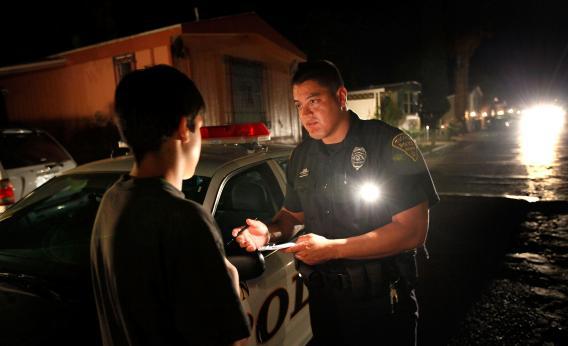Noris and Sherl Hilde were camping in the Umpqua National Forest in Oregon when a stranger with a large caliber hunting rifle approached their trailer in 2003. It was dark outside, around 10 p.m., and a shot rang out and hit Sherl while she was looking out the window. Noris called 911, but he was shot and killed while still on the phone. According to Sherl’s later testimony, the shooter entered the trailer, put a pillow over her face, and rummaged around unsuccessfully for keys to their truck. Sherl made it to a hospital, where surgery saved her life.
In the aftermath of the shooting, the investigating detectives quickly focused on Samuel Lawson, who had been parked at the Hildes’ campsite when they arrived that morning and moved his truck when they told him they had reserved the space. At trial, Sherl confidently identified Lawson, saying that she “always knew it was him.” No blood, DNA, or other physical evidence linked him to the crime, though he did have a large caliber rifle with him earlier that week that he said was stolen from his unlocked truck before the Hilde shootings. Based largely on Sherl Hilde’s ID and testimony, a jury convicted Lawson in 2005 of aggravated murder and attempted murder. He was sentenced to life without the possibility of parole.
But Lawson never confessed to the crimes, and in retrospect, there was always reason to doubt Sherl’s eyewitness ID. She repeatedly told nurses at the hospital that she had never seen the shooter, which is why she was able to survive. She failed to pick the defendant out of at least three photo lineups she was shown in the days and weeks after the attack. She said while in the helicopter that took her to the hospital that the shooter was the man they had met earlier in the day—Lawson—but she also told paramedics that the helicopter pilot was the shooter and that she had not seen the shooter’s face. Detectives asked leading questions about the man she had met earlier in the day starting in their first interview with Hilde, and they told her that he was in custody before she ever identified him. Only after she was repeatedly shown pictures of Lawson alone and saw him at a pretrial hearing did Hilde pick him out of a photo lineup as the perpetrator. In other words, the police used classic suggestive tactics that can distort an eyewitness’s account.
Because of these questionable practices, the Oregon Supreme Court recently overturned Lawson’s conviction, sending the case back for a new trial. The court reviewed more than 2,000 studies of eyewitness ID procedures, which have turned up a multitude of problems. For starters, a study of 250 cases in which convictions were later overturned, as a result of DNA evidence exonerating the defendant, found false eyewitness IDs in 79 percent. Why so much unreliability? Sometimes police (consciously or subconsciously) encourage the witness to identify a suspect by asking leading questions and giving feedback to increase the witness’ confidence when he or she gives the answer they’re looking for. Lineup procedure also matters—sequential lineups tend to be more accurate than simultaneous lineups because the witness tends to think, “Is this the person I saw?” for each photo rather than “Who looks the most like the person I saw?” Also, repeatedly viewing one suspect’s photo can confuse a witness into thinking he or she recognizes the suspect’s face from the crime.
The circumstances of the crime also come into play: the length of time the witness saw the suspect (shorter durations are generally less reliable) and the race of both the witness and the suspect (cross-racial IDS are also less reliable). Distance, light, and stress also can make a difference. Hilde saw the shooter who killed her husband and wounded her, if at all, in profile in a dimly lit trailer as she peeked from behind a pillow while suffering from a severe gunshot wound.
The upshot of the research is a conundrum for courts and the criminal justice system: We trust the memory of the person who saw the crime, but often we shouldn’t. Witness confidence is generally a poor indicator of the reliability of an ID. Juries, however, tend to believe witnesses who say they’re sure, even when they are told about the poor viewing conditions and suggestive police tactics.
All of this led the Oregon Supreme Court to develop a new standard for allowing an eyewitness identification into the evidence at trial. The court decreed that prosecutors will now bear the burden of showing that the eyewitness testimony they offer is reliable, instead of making the defense find evidence to show that it is not. Oregon is not the first state court to move in this direction. The New Jersey Supreme Court issued similar rules in 2011. The U.S. Supreme Court, on the other hand, recognized the problem of false eyewitness identifications last year while showing little interest in addressing it. It is up to the states, then, to follow New Jersey and Oregon in developing rules to ensure that the eyewitness ID juries hear are reliable. As for Lawson, the local district attorney will decide whether to retry him with or without Sherl Hilde’s testimony. One journalist following the case has argued that there isn’t enough evidence left to convict and Lawson should be allowed to go free.
